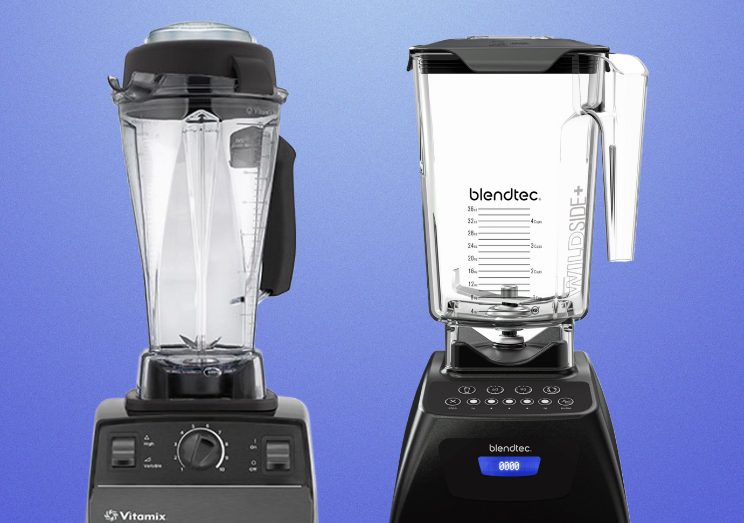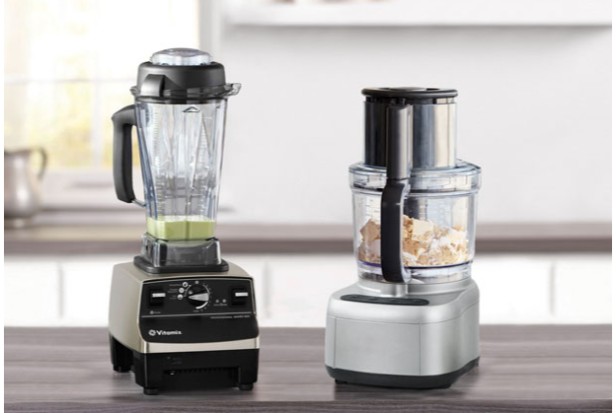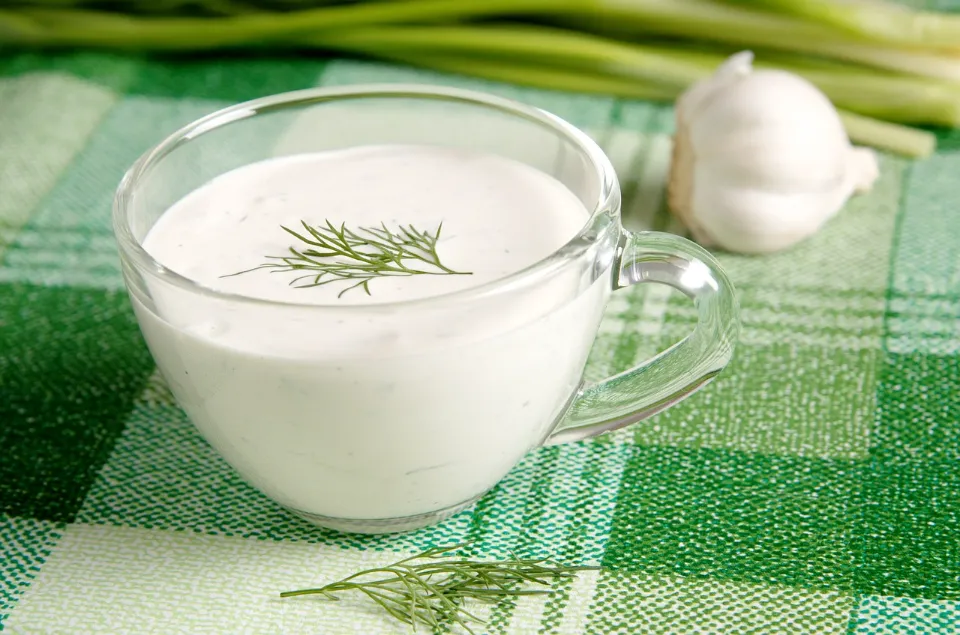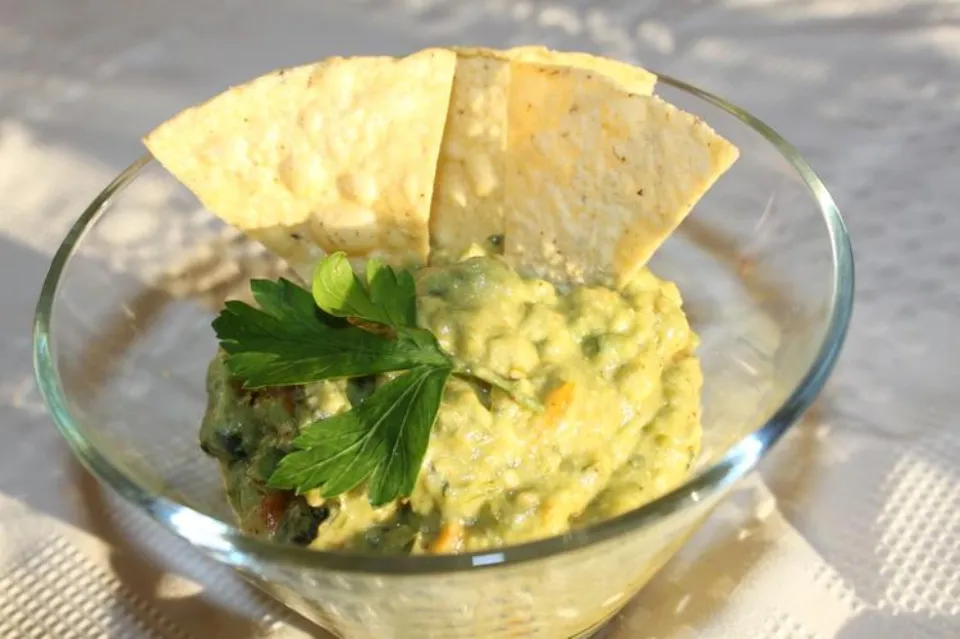Some food processor tasks can be performed with a Vitamix. Slicing is not permitted, but you can do some chopping and mixing. A lot of food processing tasks can be completed by a Vitamix, but not all of them.
Most of the time, when people inquire as to whether they can use the Vitamix as a food processor, what they really want to know is if they need both. Totally up to you, really! We’ll examine what a Vitamix can and cannot do in more detail to help you determine whether you need both appliances.
What a Vitamix Can Do?
A multipurpose kitchen tool, the Vitamix is capable of mixing, blending, and chopping. You can achieve it as long as you use it properly, regardless of whether you want your ingredients to be smooth or coarse.
Chopping
All types of fruits, vegetables, and other foods can be finely chopped using the Vitamix. However, one of its specialties is coarse chopping. Consider the more difficult vegetables, such as cabbage, kale, onions, carrots, and cauliflower. They are simple to chop up for various dishes quickly. Remember that you can also grate hard cheese or make crushed ice.
Making sure you are using your blender properly is a useful tip to keep in mind when chopping with it. For instance, if you’re only using a few ingredients, dry chopping is preferable. On the other hand, wet chopping works better with bigger quantities. It’s also important to remember that using the Vitamix wet rather than dry will result in a smoother finish.
Mixing & Blending
Another job that this blender is capable of doing well is mixing and blending. In actuality, it’s one of its most impressive features. The things this machine is capable of are virtually endless.
Depending on what you want, this blender can produce texture-free blends or blends with a smooth consistency. This little puppy can blend almost anything you need it to!
What a Vitamix Cannot Do
A food processor beats the Vitamix in one particular area. Unfortunately, the Vitamix lacks the ability to slice fruits and vegetables as finely as a food processor can. Consider cole slaw as an illustration. Summer slaw is typically enjoyed in long slices. Making Julian-style tomato cuts is another illustration.
This is one situation where a food processor would be useful if you are not skilled with kitchen knives: if you frequently slice things for different recipes. Having said that, Vitamix is aware of this flaw and has made some intriguing changes, which we will discuss in more detail later.
Can You Use a Vitamix Like a Food Processor?
These two appliances are optimized for different things, as we can see from the distinctions mentioned above.
Drinks, smoothies, soups, crushed ice, frozen desserts, and other liquid-containing items work better in a Vitamix. With a Vitamix, even thicker mixtures like nut butters and hummus can be improved by using the convenient tamper, which can help push ingredients to the blades as you blend.
A food processor, on the other hand, will not work well with anything that contains a lot of liquid. You can’t make soup in a food processor the way you can in a Vitamix because it will get messy and foamy. Only a blender, not a food processor, can be used to create things like a smooth soup or a smoothie without any lumps.
In general, a food processor is better for leaving slices and pieces rather than mush, as well as for more evenly slicing and shredding vegetables and other hard foods (rather than just pulverizing them).
Are both appliances required, then? Or can one hide the other?
While a Vitamix blender can do almost everything a food processor can, it lacks the flexibility of a food processor.
The main function of a food processor is to finely chop or shred vegetables. Also capable of doing this is a Vitamix. With that said, the result from a Vitamix will probably be more mushy and/or uneven. Although generally speaking this is not a big deal, a food processor has an advantage over a Vitamix if you want a more sliced effect, such as for cole slaw. Simply put, a blender cannot produce larger, non-liquified slices in the same manner as a food processor.
Making chunky mixtures like salsa is another common application for food processors. Once more, a Vitamix can accomplish the same task; however, the outcome might not be as good. Many Vitamix models have a pulse feature that, by enabling you to leave chunkier pieces, resembles a food processor. You can get chunky mixtures with a Vitamix just like you can with a food processor by using the pulse function or blending for a brief period of time on low speed.
Blenders Vs Food Processors
Both food processors and blenders can handle a variety of kitchen prep jobs.
The cutting technique each uses is the primary distinction between the two.
The blades on a Vitamix blender are especially strong and long-lasting, and they are made to smash the contents of the container into an exceptionally smooth mush.
Blades in food processors are smaller and sharper. They are made for chopping, slicing, grating, and other food preparation tasks. Put simply, they offer much more control over the final consistency
Additionally, cutting discs made for excelling at a particular task are frequently provided.
Similarities
- Both can manage challenging or hard ingredients.
- They are both excellent for quickly preparing and coarsely chopping ingredients.
- can add food without stopping and removing the lid; food processors have a food chute and pusher, and blenders have a two-part lid with a plug and tamper.

Differences
Convenience
- Unlike food processors, Vitamix blenders are typically kept on the kitchen counter rather than being hidden away because they are not as big, heavy, or bulky. This indicates that a Vitamix is much easier to use and is frequently used more than a food processor.
Ease of use
- However, this varies depending on the model of Vitamix and the model of the food processor it is being compared to. Vitamix blenders are frequently easier to use and more user-friendly.
- A tamper, which is very useful for moving the food around while blending and is also included with Vitamix blenders, is another feature. without having to stop, remove the lid, scrape down the sides, then resume.
Ease of cleaning
- Cleaning a Vitamix blender typically takes less time and effort; for example, blending soapy water usually does the trick. This, however, greatly depends on the substance you are blending; something thick and sticky will be more difficult to scrape out of the base of a blender than from the base of a wider food processor container from which you can remove the blades.
Jar shape
- The food is pushed into tall, narrow pitchers that are part of Vitamix blenders, which have blades at the bottom.
- Food processors have shorter, wider containers with blades at the bottom facing directly outward from the center.
Blades
- The 4- or 6-pronged blades on Vitamix blenders are typically moderately sharp. These blades are designed to break down ingredients and mix them with liquids.
- Located low and horizontally in the container, food processors have extremely sharp blades. Instead of mashing and crushing like a blender, these razor-sharp blades are designed for chopping and slicing food.
Power
- The power and speed of Vitamix blenders are greater.
Noise
- Loud noises are typical of food processors.
- Even though they have a lot of power, Vitamix blenders are built to be quieter than the majority of powerful blenders and appliances.
Price
- Food processors typically cost less than Vitamix blenders.
Durability
- Because they are made to withstand heavy use, Vitamix blenders are renowned for the high quality and longevity of their parts. more so than a food processor, typically. (Hence the generally higher pricetag)
Function/Use
- Considering that a Vitamix is designed for blending, it can be used to combine, mash, crush, shred, and pulverize ingredients, typically turning them into a paste or liquid.
- On the other hand, a food processor is more frequently used for these types of operations., usually for meal prep.
- Food processors cannot handle liquids the way blenders can.
- A Vitamix’s strong motor, circulation vortex, and tamper are all made to produce a smooth blend that is perfect for drinks, pastes, sauces, and other things.
- A food processor’s wider bowl and sharp blades are made to produce a specific level of chunkiness (the more you process it, the smaller it gets).
- Food processors can leave ingredients in a chunky (not paste) state; blenders cannot.
What Foods Can I Process in a Vitamix Blender?
When chopping very tough vegetables at a low speed, your Vitamix blender will produce the best results. Consider foods that are tough, like cauliflower and carrots.
For this kind of prep work in the kitchen, I strongly advise using the Vitamix blender’s pulse feature.
You can prevent turning your chopped vegetables into a slushy mess by combining a low speed with brief bursts of activation.
There are two main methods you can use to make life easier and more effective:
Solution 1 – the Dry Chopping Method
Working in incredibly small batches is required for the dry chopping technique.
Up until the desired consistency is reached, you add the job cup by cup while blending at a low speed.
Each batch should process quickly even though you must work in incredibly small batches. Once you master it, you can quickly process an overall quantity that is surprisingly large.
To get this right, though, will require some trial and error. It all depends on the kind of ingredient you’re using and the Vitamix model you have at home.
In order to balance ideal consistency with turnaround speed, my advice is to start out at a slower speed and increase it gradually.
Solution 2 – the Wet Chopping Method
As the name implies, adding liquid to your ingredients while using the wet chopping method. Foods that are naturally moist, like coleslaw, are the best for it.
Initialize the blending jar with your vegetables. Then, just add enough water to make the vegetables float above the blades.
The amount of time the vegetables spend in contact with the blades is decreased because there is plenty of room for them to swish around. It will be considerably less mushy in the end.
You simply drain the liquid from the mixture once the desired consistency has been reached.
This enables you to blend much larger quantities of ingredients.
On the other hand, you’re also flushing a lot of flavor and nutrients down the sink with the water!
Here, you must determine whether the gain outweighs the loss.
Solution 3 – the Attachment
The fact that many of its customers would like to be able to use their blender as a food processor is known to Vitamix.
In response, it recently released a food processor attachment designed specifically for certain models.
Where a Food Processor is Lacking
From what you can see above, Vitamix can handle the majority of your blending requirements. Still, a lot of people ponder whether they really need both appliances if their blender is incapable of performing any slicing.
Since those are the main features of the Vitamix blender, we could have continued with this list but didn’t want to “hit the nail on the head” too much.
You really don’t need both, to answer the question of whether you do. Your needs for blending versus slicing should be considered first. You can probably do this by hand if your standard recipes don’t require frequent slicing. It’s even better now that you can use the Vitamix to chop up some of the ingredients for slaw instead of constantly hauling out the food processor.
The food processor attachment for Vitamix was just released. Your every slicing need is met by this eagerly anticipated small feature. It’s also noteworthy that Vitamix patented their food processor concept, which included numerous details based on research and was created to be as reliable and effective as their blender.
Other Reasons to Choose the Vitamix Blender
So, now that the fundamentals have been covered, let’s quickly review. For chopping, blending, and mixing, the Vitamix blender works wonders. By using its food processor attachment, it can also slice. But you won’t be able to slice with the blender without the attachment, and your cuts won’t be as even.
Consequently, you can use your Vitamix to make hot soup, ice cream, nut butter, smoothies, and juices. The blender will probably last a lot longer than a mid-range food processor and is also simpler to clean and generally more attractive on your counter.
Conclusion
Yes, your Vitamix blender can be used as a food processor, if that was a question you were asking. This is especially true now that they’ve added a new attachment that makes slicing fruits and vegetables simple. We believe that after reading this, you will have a better understanding of this multipurpose item and be able to use it to your advantage.
Frequently Asked Questions
I wanted to finish this article by responding to some of the most frequent queries readers have about it.
Should I Buy a Blender Or a Food Processor?
Exactly how you achieve your goals will determine this. Smoothies, sauces, and other products requiring fine blending are easily prepared using a high-quality blender.
Slice, dice, and grate tasks are better handled by a food processor. How well you are able to maintain a certain consistency makes the difference.
Chopping tough vegetables like cabbage, cauliflower, and carrots is one of the food processing tasks that a blender performs best.
You can get a rough chop instead of a pile of mush by processing these tough ingredients at a low speed for brief periods of time!
What Does a Food Processor Do That a Blender Doesn’t?
More precise consistency control is possible with a food processor. Depending on the specific task you have before you, you can use a variety of attachments.
Blenders are made to break down anything you put in them! Even at the lowest speed setting, it is very challenging to roughly chop or slice soft ingredients.
When Should You Use a Food Processor?
When you need a very specific consistency finish, a food processor is preferable to a blender, is the straightforward response to this question.
Just think about the difference between carrot juice and carrot grated, and you’ll understand the distinction!








